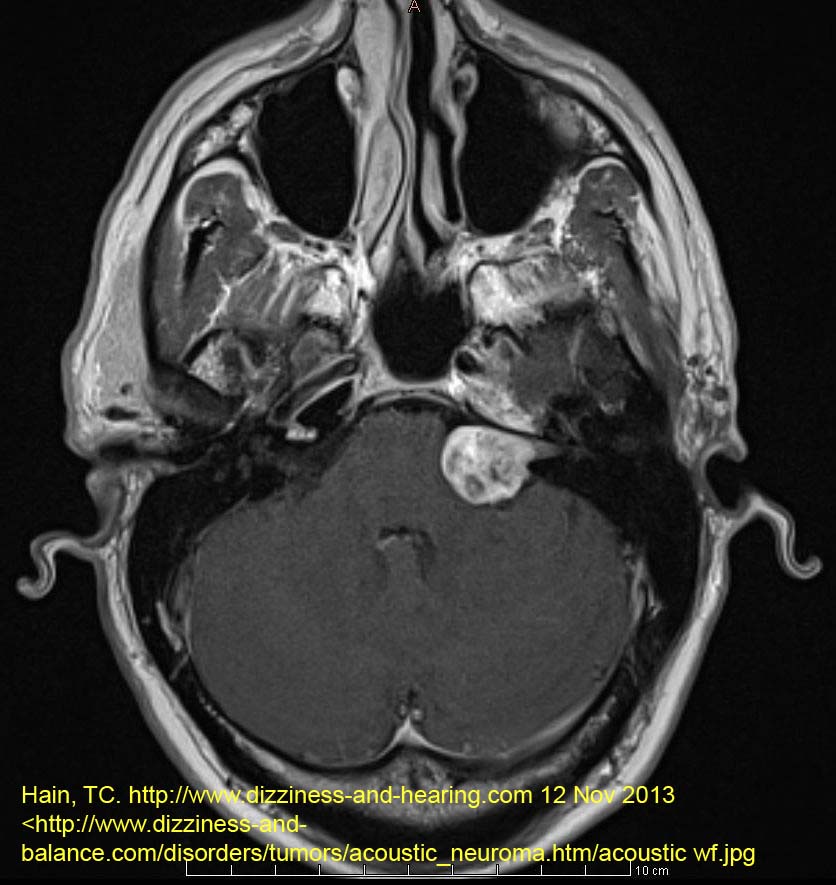An Acoustic Neuroma (or Vestibular Schwannoma) is a benign encapsulated tumour which arises from the 8th cranial nerve. The 8th cranial nerve is actually two separate nerves, one associated with balance and the other with hearing and it is here that this tumour usually arises from either one of these nerves in the bony internal auditory canal between the inner ear and brain. The 7th nerve which services facial movement also passes through this canal as do important blood vessels. These tumours are usually slow growing but as they expand they begin to press on the hearing, balance, and other nerves. They can then extend into the area at the base of the brain and press on the vital structures of the brain, which can be life threatening.
Cause
Until recently the cause was unknown except for a small group of patients who have Neurofibromatosis type 2 which is genetically determined. Recent research has discovered the following:- Neurofibromatosis type 2 (NF-2) is a dominantly inherited disease characterized by the formation of bilateral acoustic schwannomas and other benign tumours associated with the central nervous system. The NF-2 protein, also known as merlin or schwannomin is a tumour-suppressor protein whose loss or absence is clearly linked to the development of certain types of brain tumours, in particular, acoustic neuromas.
“Acoustic Neuromas appear to be caused by a malfunctioning gene on chromosome 22. Normally, this gene produces a protein that helps control the growth of Schwann cells covering the nerves. What makes this gene malfunction isn’t clear”. (1)
Symptoms
The early symptoms are reduced hearing in one ear, ear noise (tinnitus) and poor balance. Large tumours may produce additional symptoms including headache, facial pain, numbness or twitching, double vision, speech difficulties, and swallowing problems.
How is it found?
If you have any of the symptoms previously mentioned, request a referral from your local doctor to an Ear, Nose and Throat Specialist who will carry out the appropriate hearing and balance tests followed by either a C.A.T. Scan or preferably an M.R.I. Scan that will show the presence or absence of the tumour. A diagnosis of Acoustic Neuroma should always be considered with unilateral (single side) ear symptoms.


